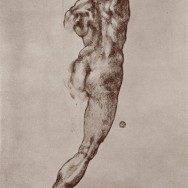How is Rolfing different from massage?

Massage therapy is a terrific way to unwind, or, more exactly, to activate the parasympathetic nervous system. In addition, it can benefit circulation, reduce edema, work out areas of tight musculature, and leave people with a rejuvenated feeling of well-being.
A massage session involves a brief dialogue and then hands-on treatment using an oil or cream, so the practitioner’s hands glide smoothly over the client’s skin. Unless the client wants to talk, little else is said, except when, roughly half-way through the treatment, the client is asked to turn from front to back. In an hour, a seasoned practitioner can give a thorough full-body treatment.
Rolfing Structural Integration is a highly effective modality for resolving pain rooted in an imbalance in the body’s soft tissue. The immediate aim of Rolfing is structural change, not client relaxation. Rolfing corrects undesirable fascial relationships in the body, addresses faulty muscle firing patterns, and heightens sensory awareness. In so doing, it can also have a positive effect on circulation and edema. When fascial restrictions release, there is often a burning sensation, like an “Indian rope burn”. This can be uncomfortable, but is usually over in a matter of seconds. More people than not find Rolfing sessions relaxing overall.
A Rolfing session begins with a dialogue around the client’s goals for treatment. Next, the client undresses to underwear or running shorts, and the Rolfer makes a brief structural assessment. On-table work follows, in which the client may be asked to make specific movements to broaden the effect of the Rolfer’s contact with a given region of fascia. While each session is unique, the nature of Rolfing is far more interactive than massage. No lubricant is used since the objective is to “hook” and lengthen fascial tissue, therefore friction is paramount.
Unlike massage therapy, which strives to enhance the circulation of blood and lymphatic fluid and to ease tension in constricted muscle, Rolfing addresses the connective tissue, or fascia of the body.


